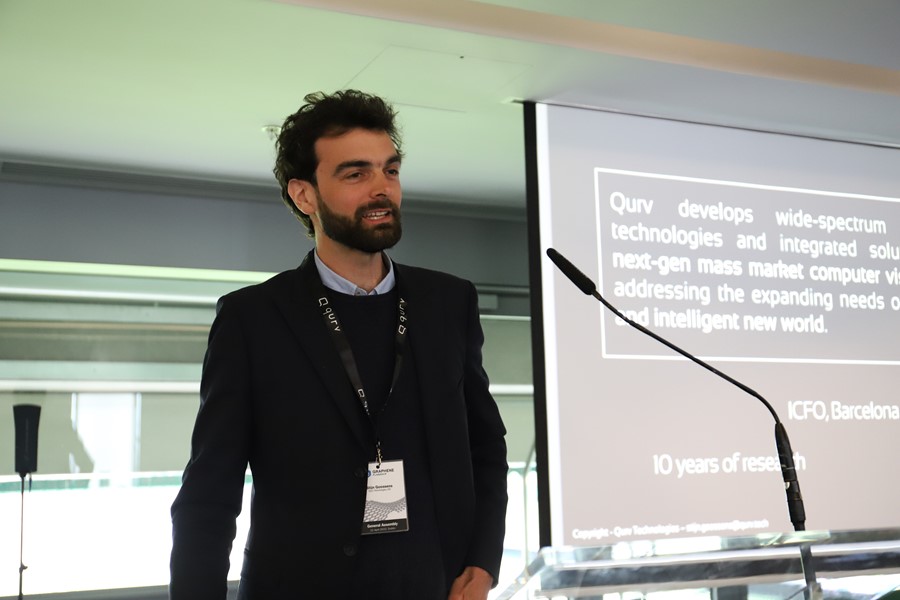Towards safer driving in adverse weather conditions
An interview with Qurv’s CTO about wide spectrum image sensors for computer vision applications in self-driving cars and other mass-market autonomous systems.
Graphene Flagship Partner Qurv Technologies, Spain, is developing new sensors to unlock computer vision applications with unprecedented levels of performance, reliability and function.
Our discussion with Qurv’s CTO Stijn Goossens, leader of the Graphene Flagship Spearhead Project AUTOVISION follows.
What’s the problem with image sensor technology in current automotive and autonomous systems?
The world is seeing a new population appearing, which is a population of robots and autonomous systems. These systems currently have a limited ability to reliably interpret the world around them which can lead to accidents and slow down their uptake. State-of-the-art image sensor technology for mass-market autonomous systems is limited to visible light. This poses major problems in adverse weather conditions, such as fog, dust, rain, snow and very bright sunlight.
Which type of image sensors are you developing?
Qurv develops wide spectrum image sensors that capture UV, visible and infrared photons. Qurv’s technology is based on a graphene-enabled pixel stack that we integrate with CMOS integrated circuits.
Why do you need graphene?
We use graphene to provide a highly sensitive readout of photo-generated charges. We convert photons into charge and we read that charge in a precise way with graphene. In technical terms, graphene provides a low noise readout, which allows us to capture more photons.
When and where did you start?
Personally, I started working on the electronic properties of graphene at Delft in 2009. At that time there was no large-scale graphene available, and we were still exfoliating graphite with scotch tape. At the end of my Ph.D., I decided I wanted to push graphene towards applications and into an actual product on the market. I found a position at Graphene Flagship Partner ICFO, where I led an incubation project on graphene-based and wide-spectrum pixel technology. In 2020, we spun out Qurv, and since then we have been quickly developing the technology. Our first evaluation kit is on the market and has been sent out to select customers with a lot of interest.
Which applications and markets do you target at the moment?
Our technology provides benefits in different markets. One of Qurv’s target markets is automotive. In the Graphene Flagship spearhead project AUTOVISION, we explore the potential of graphene-based wide spectrum image sensors to allow autonomous cars to see better in adverse conditions.
Different players in the automotive supply chain are interested in this technology, including companies that make cars’ components (the so-called Tier Ones) and original equipment manufacturers (OEMs), which are building and selling the cars. In AUTOVISION, we have a Tier One company from Sweden, Veoneer, on board to evaluate the graphene-based, wide spectrum image sensor technology.
How do you plan to scale up production?
In our role as the leader of the Graphene Flagship Spearhead Project AUTOVISION, we are part of the 2D-EPL Industrial Advisory Board. The 2D-EPL is a very important initiative because it deals with the development of processes and manufacturing equipment that can be used by semiconductor fabs to produce and integrate graphene in their high-volume processes, enabling scale-up, and as a result low-cost graphene-based semiconductor products.

Qurv’s CTO Stijn Goossens




